Traditional Facets Of Nair Community In India
Traditional Facets Of Nair Community In India
A community of five million Nairs practice many distinct traditions, explains Dr Achuthankutty Cherussery Raghu Menon
Confused by the long name of the author? That is because the author is a Nair. Who are Nairs? It’s a difficult question to answer as they are a heterogeneous group of more than 5 million Malayalam speaking population, mainly from South Indian state of Kerala
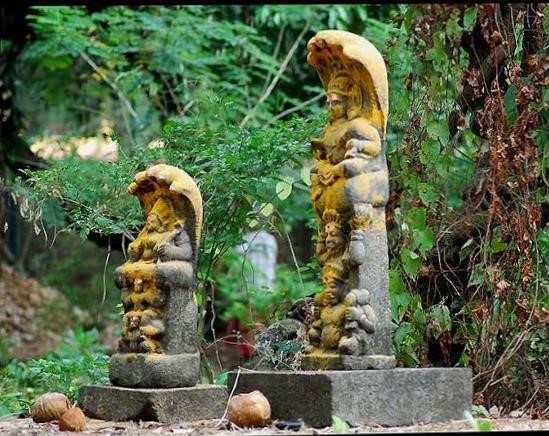 Chathurvarna system was not practiced in South India, but most Nairs would like to identify themselves as khsatriyas or warriors if a comparison would be needed. They would argue that the word Nair came from Nayak, a title conferred traditionally to army commanders. The Nair brigade of Travancore state had even defeated the Dutch and Tipu Sultan, and later assimilated into Indian army as 9th and 16th battalion of Madras Regiment. However, Nairs include all kind of working classes, teachers, kings, soldiers, farmers, traders, clerks and laborers. Other concepts are offered about the origin of the word Nair. Some say that the word came from Nagar, as descendants of Nagas since most Nair family own Naga temples called ' Nagakkavu' where they worship serpent. Many try to find connection with other names similar to Nair, like the Indo Scythian Nairis , the Nehra (Jats), the Nayyars(Khatri) and the Newars (Nepal) etc.
Chathurvarna system was not practiced in South India, but most Nairs would like to identify themselves as khsatriyas or warriors if a comparison would be needed. They would argue that the word Nair came from Nayak, a title conferred traditionally to army commanders. The Nair brigade of Travancore state had even defeated the Dutch and Tipu Sultan, and later assimilated into Indian army as 9th and 16th battalion of Madras Regiment. However, Nairs include all kind of working classes, teachers, kings, soldiers, farmers, traders, clerks and laborers. Other concepts are offered about the origin of the word Nair. Some say that the word came from Nagar, as descendants of Nagas since most Nair family own Naga temples called ' Nagakkavu' where they worship serpent. Many try to find connection with other names similar to Nair, like the Indo Scythian Nairis , the Nehra (Jats), the Nayyars(Khatri) and the Newars (Nepal) etc.
Coming back to the author’s name, the first part refers to his father’s name, second part is his mother’s ‘tharavadu’ (family) name, third part is the first name and last word is a surname referring to a sub-caste of Nair called Menon. Menon is an honorific title conferred by royalty, and represented landlords with administrative duties including tax collection. Menons were part of Kiriathil Nairs, the highest class according to old hierarchy among Nairs.
Nairs are distinguished by matrilineal ‘tharavadu’ system of inheritance. The family name, which forms part of their name, goes from mother to children; and land succession was from the mother to her daughter in this system called 'thaavazhi' (literally mother’s way). This is now a relic of past, as it was abolished by The "Marumakkathayam Law, 1933" which sanctioned dismantling of the ‘tharavadu.’ the partition of property was effected by the introduction of the Joint Family System (abolition) Act. At present, only the Hindu Succession Act is applicable, where kids are entitled to parental land, irrespective of gender. The author’s both grandfathers lived in their wives' house after marriage. Then guess, who lived in their house? Their sisters.
The eldest lady of a ‘tharavadu’ will be the nominal head, while her eldest brother ((Karanavar) will be taking care of affairs on her behalf. Outer boundary of ‘tharavadus’ seems to have been defined by relations of pollution (pula sambandham), whereby a wider matrilineal kin group was knit by symbolic ties prominently in sharing birth and death pollution and a memory of common descent. Such pollution is for 14 days for death, and 10 days for birth. On these days, one is not allowed to enter temples, or attend any auspicious ceremony.
Kalarippayattu was an essential component of education for Nairs. Nair men and even women learned the art of Kalaripayattu at an early age and used their skills in war and combat.
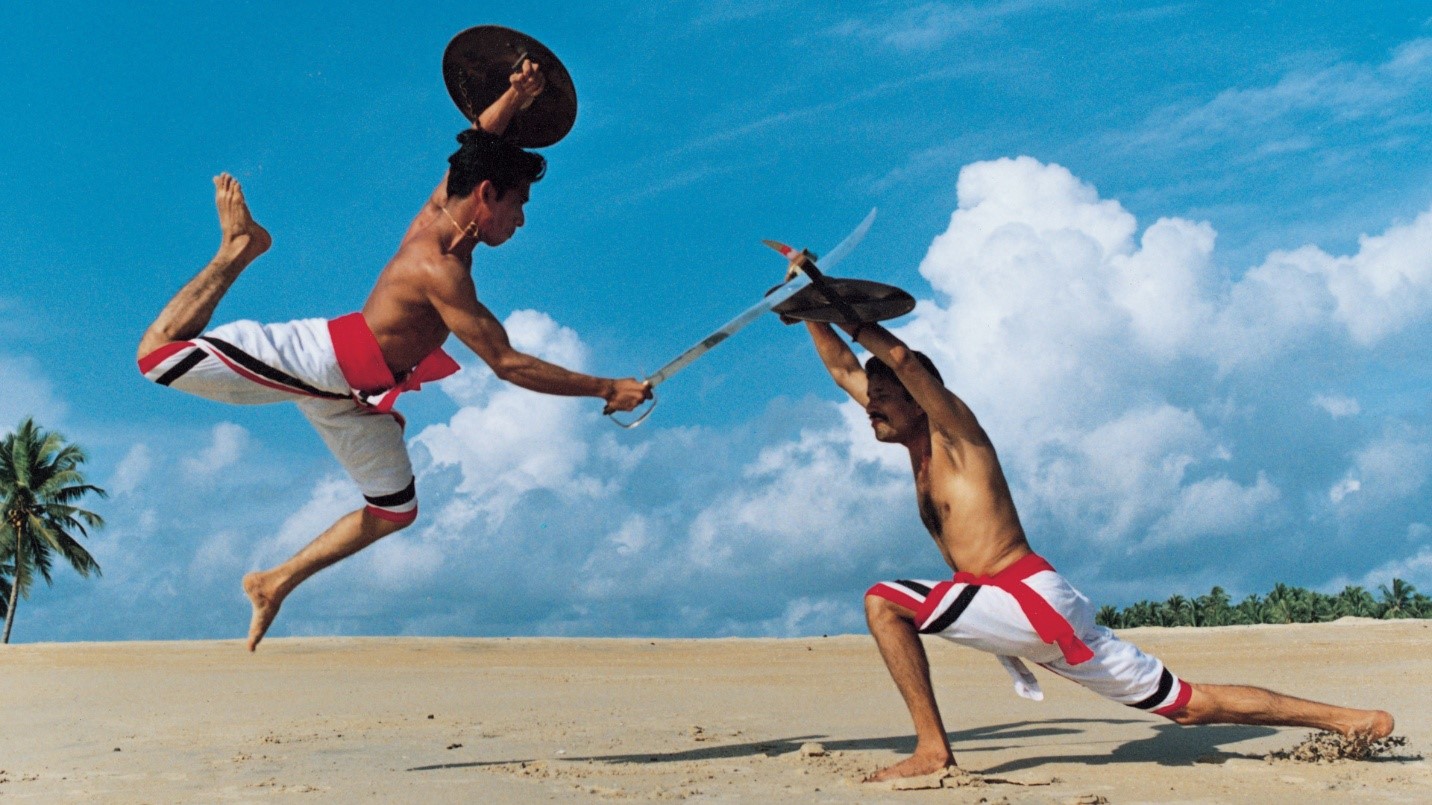 From Kalaripayattu, comes Marma Vidya. Marma shastra was an advanced way to temporarily or permanently disable or kill an opponent through a tap with a finger on a specific nerve. This Vidya was also applied to cure ailments and recovery of combat soldiers from injury. The Nair sub-castes known as Kurup and Panicker were traditionally teachers of the Kalari Martial Arts. Kalari may have given rise to Kung Fu, according to claims of ancient documents. It was outlawed by British in 1793, leading to great loss of self-esteem among Nairs. Nairs were also prohibited from carrying weapons as part of attire. Even then, few secret clans urvived, teaching the fine nuances of Kalari through generations, continuing even today.
From Kalaripayattu, comes Marma Vidya. Marma shastra was an advanced way to temporarily or permanently disable or kill an opponent through a tap with a finger on a specific nerve. This Vidya was also applied to cure ailments and recovery of combat soldiers from injury. The Nair sub-castes known as Kurup and Panicker were traditionally teachers of the Kalari Martial Arts. Kalari may have given rise to Kung Fu, according to claims of ancient documents. It was outlawed by British in 1793, leading to great loss of self-esteem among Nairs. Nairs were also prohibited from carrying weapons as part of attire. Even then, few secret clans urvived, teaching the fine nuances of Kalari through generations, continuing even today.
Nairs were always a literate community and contributed heavily to Malayalam literature. Novels such as Indulekha by O.C Menon had themes which dealt with societal constraints on romantic love. C.V Raman Pillai's Marthanda Varma dealt with themes relating to the Nair’s military past. The author’s grandmother’s uncle, Cherussery Chathu Menon , a great scholar and astrologer, decided to translate Mahabharat into Malayalam. He was a subject of Cochin Kingdom, and the King Kunjukkuttan Thampauran when came to know about this stopped him from doing so, as he would himself do the translation. So, he later resorted to translate Devi Bhagavatam. The king translated Mahabharat, and came to be known as ' Kerala vyas.'
The historical attire of the Nair men was the mundu, a cloth wrapped around the waist and then left to hang down nearly to the ground, rather than tucked in as in other parts of India. While other states have gradually moved towards wearing trousers, pants, you can still spot half of Malayali men continue to wear mundu even today. They can be spotted everywhere, casually in house, formally in offices, colleges, functions, even on beaches, or while trekking mountains. It is one for all occasion attire for the men of Kerala. The historical dress of the Nair woman was the mundu, as well as a cloth that covered the upper body. The mundum neryathum, which had become the essence for the set sari is considered to be Kerala's specific regional wear.
Historical Nair marriages were peculiar due to polyandry, polygamy and hyper gamy. These practices got changed with the advent of the Hindu marriage Act, which prevented Hindus from having more than spouse. Second degree consanguineous marriage was also practiced but is rare these days. Three types of kalyanam (marriage) can be found in old records- Kettukalyanam, Thirandu Kalyanam and Pudamuri Kalyanam.
Kettu Kalyanam used to happen before 1937 in Cochin, before1928 in Travancore and befotre 1933 in Malabar. It was thaali (mangal sutra) tying rite that took place before the onset of puberty. During this ceremony, the girl was married to a man. The ritual husband had no further duties to the girl after the completion of this ritual, although she had to observe a period of death impurity upon the death of her ritual husband. The thaali ceremony was a female centric ritual which emphasized fertility and household prosperity. This ceremony had to be performed on pain of excommunication.
Thirandukalyanam ceremony was the puberty ceremony, during which femininity is celebrated as women occupy the parts of the household typically inhabited by men.
Sambandham/Podamuri Kalyanam was most prevalent type that literally means "alliance" or "relationship". It was the customary institution that framed casual marriage alliances between men and women .This ritual of man giving a cloth (pudava) to women, and her accepting it marks the union of the bride and groom and was not necessarily a permanent arrangement. However, it was this innate weakness of sambandham that helped maintaining the integrity of the matrilineal ‘tharavadu’.
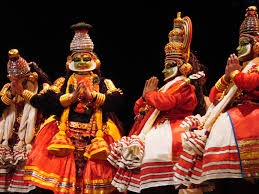 Sambandham denoted hyper gamy between Nair women and Namboothiri men as well as reciprocal marriage among Nairs. It was common for women to have multiple Sambandham, hence multiple kids to different partners. However, such an alliance was not recognized as constituting marriage by Namboothiri Brahmins as well as by colonial courts but was seen as comparable to concubinage. Two reasons cited for this were that dissolution of sambandham was fairly easy and that it did not give rise to property relations. The male partner’s property did not go the child of this Union, but mother’s property did, to her daughters. Sambandham essentially gave a Nair woman the liberty to initiate, consent to, or terminate a sexual relationship with any man and thereby formed one of the foundations of matrilineality.
Sambandham denoted hyper gamy between Nair women and Namboothiri men as well as reciprocal marriage among Nairs. It was common for women to have multiple Sambandham, hence multiple kids to different partners. However, such an alliance was not recognized as constituting marriage by Namboothiri Brahmins as well as by colonial courts but was seen as comparable to concubinage. Two reasons cited for this were that dissolution of sambandham was fairly easy and that it did not give rise to property relations. The male partner’s property did not go the child of this Union, but mother’s property did, to her daughters. Sambandham essentially gave a Nair woman the liberty to initiate, consent to, or terminate a sexual relationship with any man and thereby formed one of the foundations of matrilineality.
In case of sambandham with Namboothiri men, the system benefited both the Namboothiri Brahmins as well as matrilineal castes like the Nairs for two reasons. First, Namboothiri brahmins had institutionalized primogeniture, permitting only the eldest son to marry within the caste and get property rights. Younger sons (also called aphans) in Namboothiri families were expected to establish sambandham with Nair and Ambalavasi (temple service castes) women. Secondly, Nair families encouraged the sambandham arrangement with Namboothiri men, thereby increasing their ‘tharavadu’ status.
Presently, the Nairs do not practice either of the three forms of marriages described above but perform Vivaham (Marriage) recognized by the Hindu Marriage act of 1955. It is ceremonially the shortest in comparison to its counterparts from other Indian castes and regions. Now there is tying of Mangal Sutra, walking around fire for seven times and giving of pudava to reprise old tradition. Typically, this would end within 10 minutes, and is followed by a Sadhya, which is offering traditional meals to all attendees with more than 50 side dishes, 3 to 5 varieties of payasam (kheer) etc.
Kathakali has become the face of Kerala, but is relatively recent in origin. There is a story on it’s origin. Krishnanattam was an art form developed by Zamorin king, Manaveda Raja. It was always performed by Zamorin's Nair warriors. Once another King, Kottayath Raja asked to send this Nair troupe to stage Krishnanattam in his palace, but Zamorin refused. Furious, Kottayath Raja started another troupe of Nair soldiers and started Ramanattam, which later became Kathakali. Nattam and Kali both means play.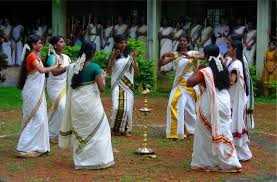
Thiruvathirakkali is a traditional dance form of Nair women. Thiruvathira is observed on the full-moon day of Dhanu Masam, on the day of the Thiruvathira (Alpha Orionis). It is believed this is the day when the Goddess Parvathi finally met Siva after her long penance. It is believed that observing Thiruvathira vratham or Thiruvathira nonbu (fast) ensures that a woman's husband would have a long life. No one eats rice preparations, but they are allowed to eat wheat and fruit. During this season, huge swings (oonjal) are erected in the backyards of most of the houses. After lunch, the Thiruvathirakkali dance around a lighted lamp, on the lines of Thiruvathirapaattu (song ) is performed.
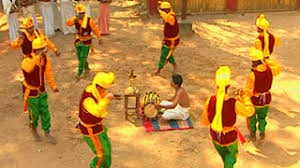 Kanniyar Kali is a folk dance ritual performed in Temples of villages in Alathur and Chittur Taluk of Palakkad district of Kerala. (The author was born in Palakkad). Author’s grand father used to participate in this. The event is usually a part of Vishu celebrations of the village and usually succeeds the Vela (Village Fair). The dances start every night with the men of the community gathering in the temples and performing a rhythmic circular dance called vattakali (vattakali literally means a circular dance). The vattakali is followed by several 'puraattu' meaning buffoonery or spoof. The purattu depicts the life and social
Kanniyar Kali is a folk dance ritual performed in Temples of villages in Alathur and Chittur Taluk of Palakkad district of Kerala. (The author was born in Palakkad). Author’s grand father used to participate in this. The event is usually a part of Vishu celebrations of the village and usually succeeds the Vela (Village Fair). The dances start every night with the men of the community gathering in the temples and performing a rhythmic circular dance called vattakali (vattakali literally means a circular dance). The vattakali is followed by several 'puraattu' meaning buffoonery or spoof. The purattu depicts the life and social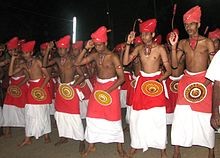 customs of various castes and tribes of medieval Kerala and Tamil Nadu. The participants are solely men and women are represented by cross-dressing men who imitate the body language and way of speaking of women.
customs of various castes and tribes of medieval Kerala and Tamil Nadu. The participants are solely men and women are represented by cross-dressing men who imitate the body language and way of speaking of women.
Velakali is a traditional martial dance of Nair community of Kerala, that is performed during temple festivals. Brightly dressed dancers wielding swords and shields depict a fight sequence between the Pandavas and Kauravas during the course of the dance
(As Nairs spread throughout the western Ghats may have many different local traditions, everything is beyond the scope of this article. This is a meagre attempt to summarize the most important traditional facets of the Nair community, comments the author.)